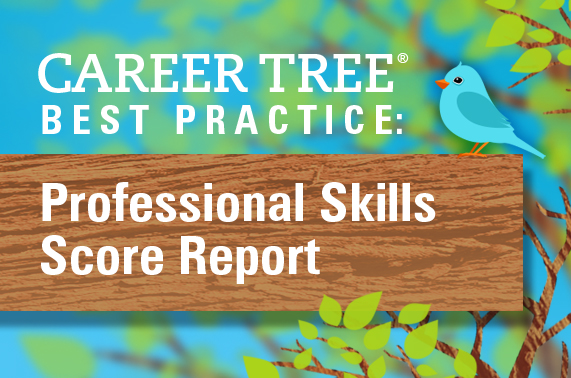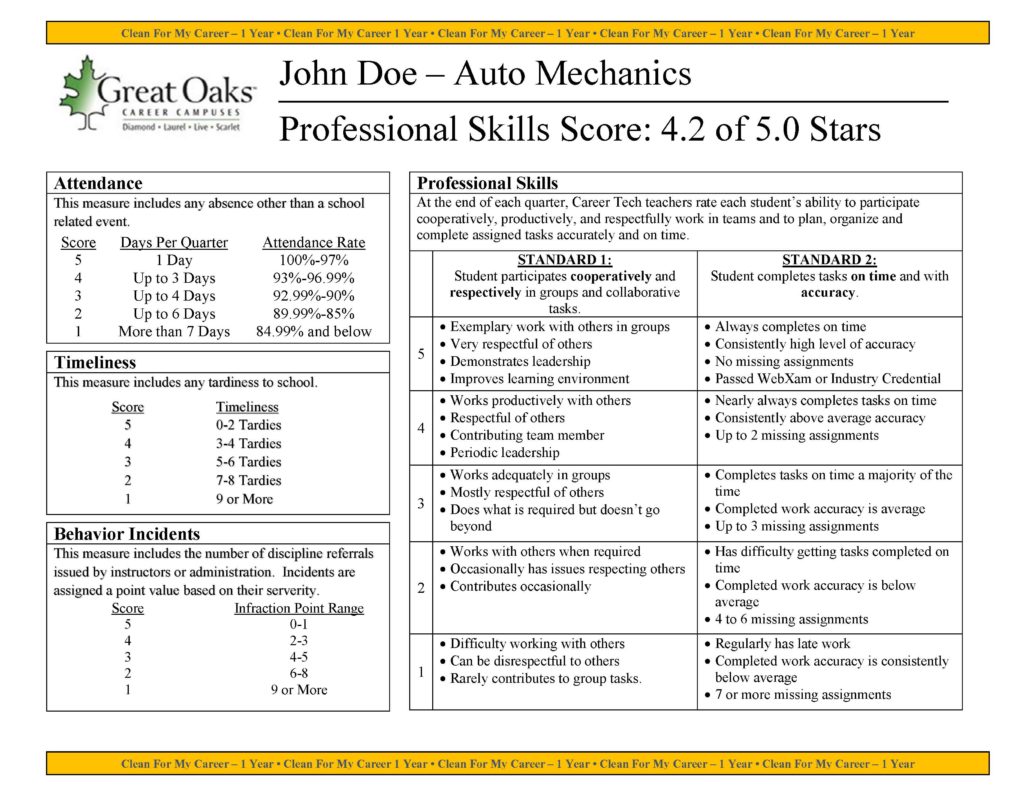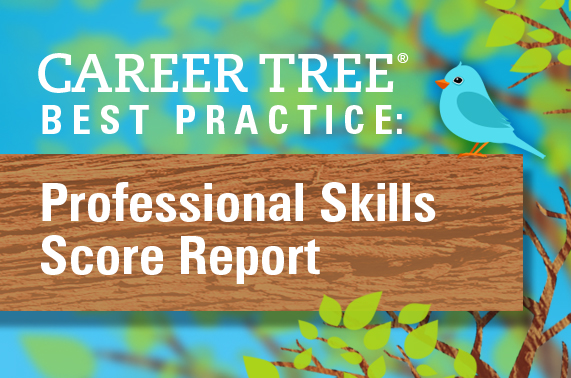
Today I’m eager to share with you an amazing Career Tree best practice developed by Great Oaks of Cincinnati, Ohio: the Professional Skills Score report. This tool, spearheaded by Assistant Dean of Instruction Mike Hart, builds an objective scoring structure and reports based on the Professional Skills Root of the Career Tree. This creates value not just for the students’ educational experience, but also for their future employability.
My team connected with Mike to find out more about this best practice and how it can be adopted by other Career Tree organizations.
The Professional Skills Score is a recent best practice, but has delivered promising results thus far. “The program just started at the end of 3rd quarter, but we have received very positive response from students and employers,” Mike says. “The system was designed for students to be able to show their professional skills to employers, but it was also meant to build their skills over the course of two years with us.” This quarterly report motivates students to think about the skills and habits that aren’t always on the job description — attendance, behavior incidents, timeliness, ability to work with others, and more. “We wanted to motivate all students to make incremental changes in one or more areas each quarter to improve their personal professional skills.” Seeing a grade for these types of skills and behaviors gives them a weight that they may not otherwise have, thus increasing students’ performance in these areas.
Beyond motivating students to hone their professional skills, data-driven scoring has other benefits as well. Great Oaks uses a Career Tree dedicated to showcasing the successful careers of program alumni. Mike says, “We’ve used the system to identify Professional Skills scores for standout alumni to put their name, employer, and professional skills score on our alumni Tree. This makes it a great marketing tool to parents and a fantastic road map for current students.”

The Professional Skills scoring system gives students an additional competitive advantage when they complete their program and move on to further training or launch their career. Their personal Professional Skills report is designed to be included on postsecondary education applications and in resumes, as a simple and efficient way for admissions offices and employers to gain a sense of the student’s professional capabilities, character, and work ethic. Mike says, “The simple snapshot serves as an indicator for employers of the type of employee they can expect based on historical data. It moves them [the student] to the top of the stack.”
In addition, as part of this program students voluntarily submit to random drug testing. Their results appear on their Professional Skills Score report in a “Clean for my Career” section to demonstrate to future employers their commitment to a drug-free lifestyle. In today’s workplace, drug-free job applicants will have an automatic advantage that sets them apart.
The Professional Skills Score uses Microsoft Access to pull the needed data from the school’s DASL and Progress Book programs. A series of tables and queries to combine the records allowed the team to generate a spreadsheet to spot check for accuracy. Once they calculated all the data that would be required, they partnered with Doug Leighton from the Hamilton Clermont Cooperative to create a specialized Access form to simplify the process. Now, all it takes is the click of a mouse to import the data, select individual students or the entire student body, and run the report.
The Professional Skills Score is a living best practice that will continue to be refined and adapted to create further value for students and employers. “A lot went into the creation and formation of the measurements in the report. We consulted our local business advisory members on the idea and used their standards for the scoring system,” says Mike. “We know we’re not finished yet and will continue to monitor the data to ensure accuracy. We hope to continue the practice for years and hope to report more positive results as we keep it going.”
What Career Tree best practices are being developed by your organization? We’d love to hear about them, so drop us a line!


